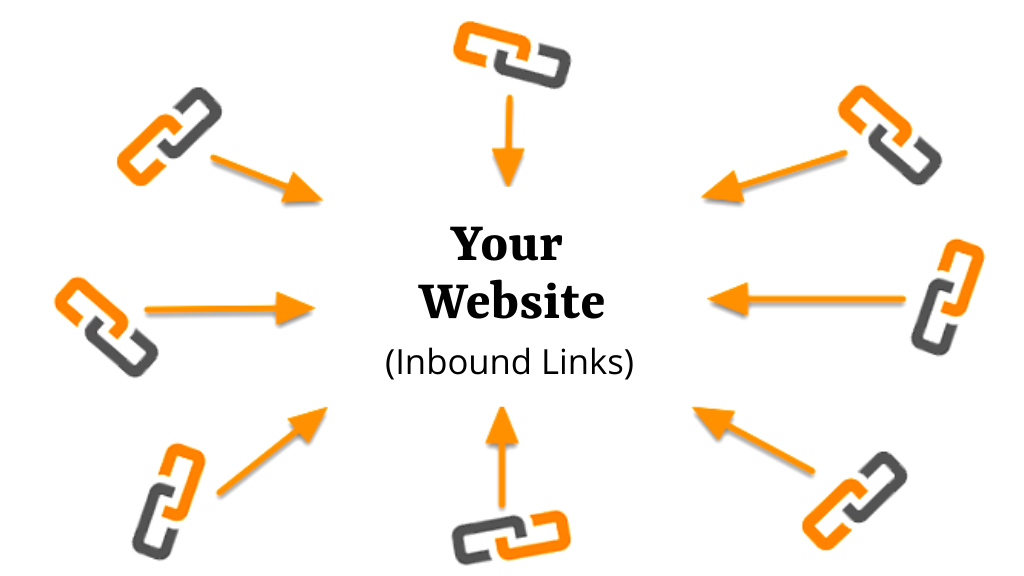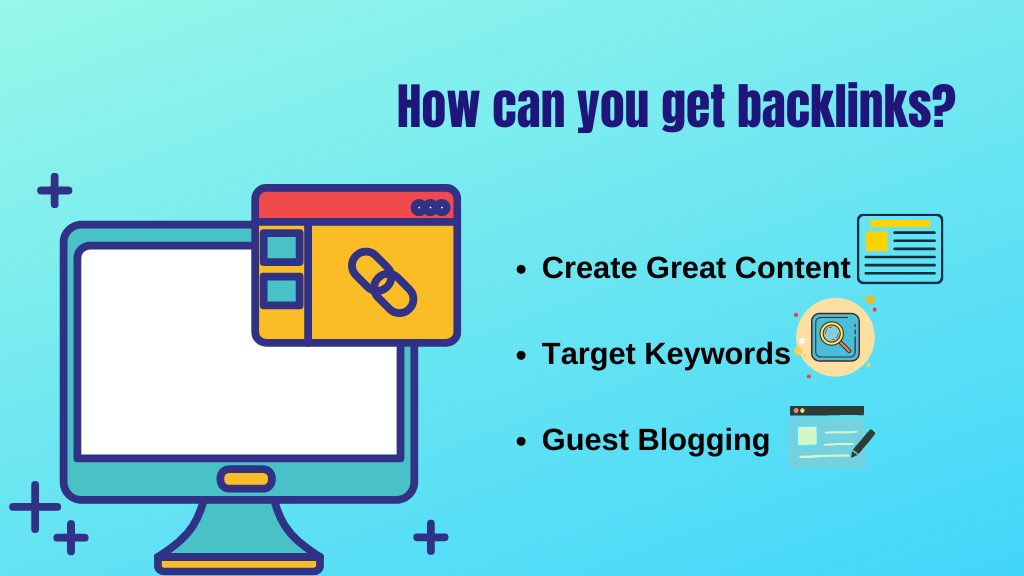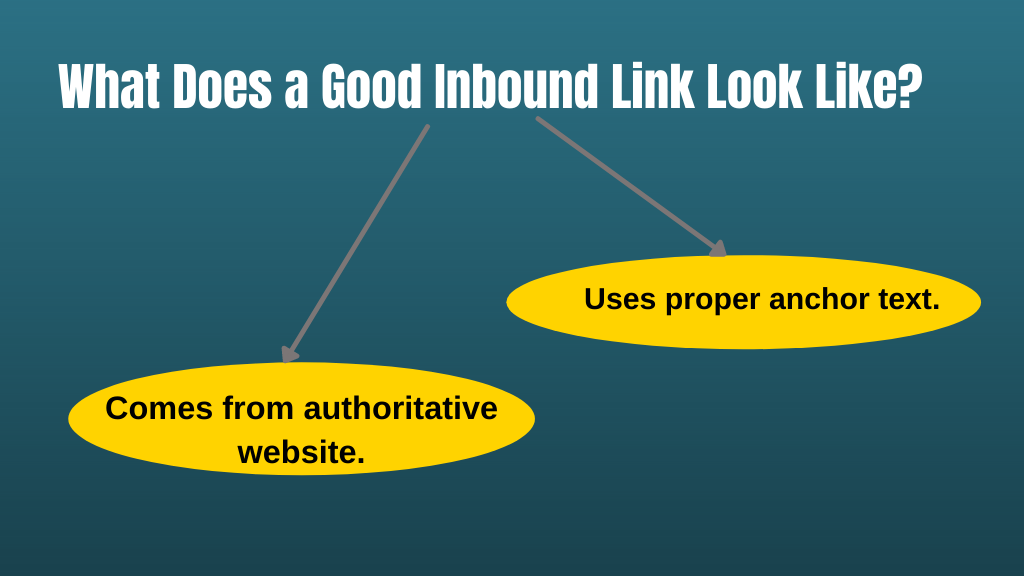When you’re new to inbound marketing, you’ll need to familiarise yourself with a variety of terms and their meanings. Adding various types of links is one such concept you may have heard while guest blogging.
External links, internal links, and inbound links are the three sorts of links that a blogger can employ to increase website traffic. In this article, we’ll look at what inbound links are and how they work.

What are Inbound Links?
The term “inbound link” refers to a link from a third-party website to your own. The link to the page on your website, which is just the URL of your site, and the anchor text, which is the text chosen based on keyword research and highlighted in the link that brings visitors to your website, are the two components of inbound links in SEO.
An inbound link is a link coming from another site to your own website. “Inbound” is generally used by the person receiving the link. For example, here’s an inbound link to Digital Universe. Digital Universe could say, “I received an inbound link from IqueLab”
Outbound links are links from your website to another website. The link to Digital Universe we talked about earlier is an outbound link on Iquelab’s blog, and an inbound link on Digital Universe.
Internal links are links on a certain website or blog post that links to another page on that same website.
That’s the basics. If you want, you can learn more about the differences between these three types of links here.
MUST READ: Top 10 best marketing strategies.
There are two main distinctions when it comes to inbound links.
- Dofollow inbound links
- Nofollow inbound links
The crawler will follow dofollow inbound links, which means it will crawl them and attribute value to them.
Nofollow inbound links, on the other hand, are ones that the crawler will not follow and will not be given any value.
When it comes to determining the value of each link, this distinction is super effective.
Simply said, a dofollow link provides value to your web pages, whereas a nofollow link does not provide value—or at least not in the same value.
You may use Ahrefs’ Site Explorer to find dofollow and nofollow inbound links for your website.
- First, go to Site Explorer and type in the URL of the website you want to see the links for.
- Then, click on “Backlinks”.
- The full list of inbound links for your website will appear next.
- You can filter the results by kind of link by clicking on “Link type.”
- You can see which links are dofollow and which are nofollow there.
Always remember that dofollow links are much more valuable than nofollow links.
How Inbound Links Help Local SEO
When another website links back to yours, this is referred to as an inbound link. Inbound links are one of the most significant aspects in search engine optimization since Google considers them to be a signal of high-quality content (SEO).
In the early days of SEO, inbound links were just a numbers game; the sites with the most links were listed first in the search results. As a result, people started using spammy link-building strategies to get ahead of the competition, leading Google to reconsider how their algorithms handled inbound links.
Inbound links have become valued for their quality rather than their quantity by Google. Links from reputable, relevant websites are far more beneficial to your SEO than links from low-quality sites that have nothing in common with yours.
Why Use Inbound Links?
Improved ranking
Outbound hyperlinks SEO techniques are one of the most widely employed tactics by SEO firms to assist your website appear among the top results on Google’s search index. The higher your site’s ranking on Search Engine Result Pages, the more inbound links it obtains (SERPs). However, this isn’t their only criterion for ranking.
To get referral traffic
Third-party websites generate referral traffic by mentioning your website’s link in order to promote visitors to your site. Depending on the amount of traffic the source page receives, the more sites that ‘refer’ your site on their pages through inbound links, the more visitors you will receive.
Brand Awareness
Outbound hyperlinks Through coordinated promotions on websites with higher search rankings than yours, SEO methods can help you raise brand awareness. This will pique readers’ interest and encourage them to visit your website. From there, you may convert them by putting together an effective sales funnel.

MUST READ: Easy guide to understand Inbound marketing.
How can you get backlinks?
Create Great Content
The importance of good content in your SEO rankings cannot be overstated. Infographics, charts, and appealing images all help to create aesthetically pleasant, information-rich content. You’ll obtain amazing results from backlinks if you provide valuable content that users are actively searching instead of arbitrary keyword stuffing.
Target Keywords
Targeted keywords will help you increase page visibility because consumers are more likely to actively search out your content. In order for your inbound links to gain traction, they must be anchored with high-ranking keywords. To find the best keywords, conduct keyword research using internet SEO services and hunt for terms that rank well yet aren’t overused.
A keyword in the 10-100 range would be ideal because it would not drown out your page amid other connections.
Guest Blogging
As a guest blogger, you may post your posts on a third-party website and provide valuable information to their audience. In exchange, high-ranking websites can help your potential audience find you by clicking on the offered links.
For example, your guest blog might link back to your landing page or to other useful blogs related to the current one, allowing readers to continue reading.

MUST READ: Schema Markup for SEO: The Complete Guide
What Does a Good Inbound Link Look Like?
A good inbound link:
- Comes from authoritative website.
- Uses proper anchor text.
So what is the good thing about anchor text? The text copy that is hyperlinked, like this, is known as anchor text. (The anchor text is “like this.”) Natural anchor text is found in good inbound links as well as anchor text. According to Google, the following is unnatural:
“Links with optimized anchor text in articles or press releases distributed on other sites. Because Google recognizes the context of a link, anchor text like “learn more” and “click here” can be just as valuable as keyword-optimized anchor text.”

How to get more local links for your business
Grassroots marketing is one of the most effective techniques for gathering local links. Business owners used to get involved in their communities to assist them become more visible to local customers. In today’s world, community involvement sometimes comes with an added bonus: inbound links from other local businesses, which assist boost visibility with online customers.
Take advantage of the things you’re already doing if you’re already involved in the community in some way. There’s a high possibility you already have a few possibilities to get links without adding anything new to your to-do list. If you’ve already built relationships with other businesses or organization in your location, it’ll be simple to take advantage of some of those relationships and grow your business.
Do you require a few more suggestions? Here are some common link-building strategies to consider for your local SEO strategy.
- Sponsor local events or organizations.
- Find out what your staff does outside of work.
- Support local charities.
- Take part in local meetups.
- Get featured on local blogs.
- Join local business associations.
- Get listed in local business directories.
Inbound Links: The Key to Improved Site Traffic
Increasing your page rankings by using inbound links to get more website visitors is an excellent strategy to do it. Although it isn’t the most important component, the quality of your content and the value it provides to the correct audience are equally important. Use our suggestions to gain the finest backlinks and boost your internet visibility!
For more on the basics of SEO, check out our What’s SEO article.
Understanding Link Explorer Terminology
Inbound Links (backlinks) – An incoming link from a page on another website back to your own site.
Spam Score – Represents the percentage of sites with similar features we’ve found to be penalized or banned by Google. This does not mean that the site is spammy. It’s best to use this is a guide to potentially spammy sites for further investigation.
Anchor Text– The visible, clickable text in a hyperlink.
Followed Links – Links that do not have a nofollow tag, these are crawled and indexed by the search engines.
Nofollow Links – Links that instruct crawlers not to follow links on a particular page or specific links. A nofollow directive can be added to a page or link on a page.
Links via Redirect – Inbound links pointing to a URL which redirects to the site you are tracking or researching. If page X links to page Y and page Y has a redirect to page Z, the link from page X will show up as a link “via redirect” to page Z.
Hire us for inbound marketing.